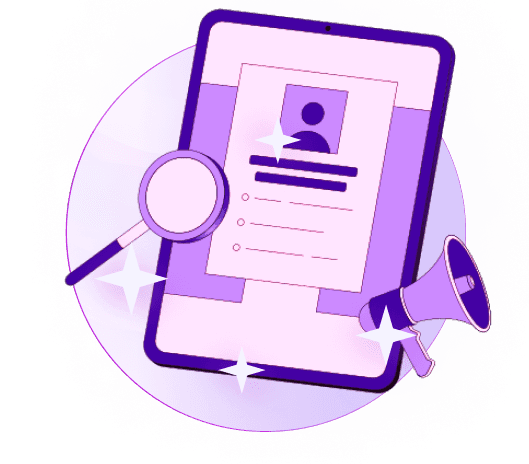Blogs
Articles

AI Signal Detection Techniques: Advanced Methods and Applications
Healthcare settings fail to report 90% of adverse events. This shocking number explains why AI signal detection techniques play a vital role in today's informed world. Yes, it is crucial to ensure patient safety and pharmacovigilance signal detection.
AI surpasses human experts in three key areas: data integrity, data mining, and regulatory compliance. These features enable better signal detection and improve data quality.
This piece explores the workings of these advanced AI signal detection techniques, their ground applications, and future possibilities in this ever-changing technology.
From Manual to Machine: Evolution of Signal Detection
The pharmacovigilance landscape has changed remarkably. Traditional signal detection methods that once identified potential safety concerns have become overwhelmed by data volumes in modern healthcare systems.
Why AI became necessary in signal detection?
AI adoption in signal detection wasn't just a tech upgrade—it became essential due to several critical factors:
Pharmaceutical companies struggled with manual signal detection processes before AI. These traditional approaches depended on case-by-case assessments that took too much time, drained resources, and showed human bias. This created major bottlenecks in safety monitoring systems.
Data explosion created an unsustainable burden Individual case safety reports (ICSRs) offered rich information, but the growing data volume created huge problems in signal detection and validation. The 2020 annual report on EudraVigilance from the European Parliament showed that 80% of all potential safety signals identified between 2018-2020 were false positives. This highlighted how inefficient manual methods had become.
Resource constraints needed automation Manual procedures to assess individual causality became harder to maintain as data volumes grew. Both pharmaceutical industry leaders and regulatory agencies stressed the urgent need to automate these time-consuming procedures. Until now, automated tools for such purposes were scarce.
Moving from reactive to proactive The industry has changed from reactive to proactive approaches, manual to automated processes. Organizations can now turn complex datasets into actionable insights through advanced analytics, machine learning, and AI. They often predict safety issues before they surface.
AI-driven approaches have shown substantial benefits. These methods can speed up drug development by 500 days while cutting costs by 25%. AI also improves efficiency through:
Natural Language Processing to scan literature, social media, and medical records
Pattern recognition to detect hidden trends in large datasets
Automated disproportionality analysis for rapid database evaluation
This change goes beyond technological advancement—it shows a complete reimagining of signal detection to protect patient safety.
Core AI Techniques for Signal Detection
AI techniques have changed how we detect safety signals in pharmacovigilance. These methods now give us unprecedented precision to identify potential risks from drug reactions.
Machine learning models used in safety signal detection
Several machine learning algorithms have showed remarkable results in signal detection. Recent studies show that Gradient Boosting Machine (GBM) models can achieve impressive AUC scores of 0.95. These scores are by a lot better than traditional methods which typically achieve AUCs of 0.55 or lower. Here are other powerful algorithms:
Random Forest (RF) - achieving AUC scores of 0.92 for safety signal detection
K-means clustering - effectively identifying clusters of related adverse events
eXtreme Gradient Boosting (XGBoost) - especially helpful with time-series data analysis
Natural language processing for unstructured data
NLP combines linguistics and artificial intelligence to create algorithms that process unstructured data from clinical notes, medical literature, and patient records. This technology extracts important clinical information from narratives and protects patient privacy through de-identification algorithms. NLP techniques have proved their worth by identifying overdose events with sensitivity of 0.80 and specificity of 0.93.
Deep learning for complex pattern recognition
Deep learning models excel at finding complex patterns that would stay hidden otherwise. These neural networks search for smaller features within larger patterns through early layers. They analyze feature combinations in later layers to determine the most probable classification. Bidirectional long short-term memory (Bi-LSTM) networks combined with convolutional neural networks have achieved F1-scores of 0.87 for biomedical named entity recognition in pharmacovigilance.
Comparing AI vs traditional disproportionality analysis
Traditional methods like reporting odds ratio (ROR) and information component (IC) calculate indices based on contingency tables. They ignore confounders that may lead to inaccurate signals. Machine learning approaches use multiple features and perform better than these traditional methods consistently. GBM detected 24 additional signals for nivolumab compared to ROR, which shows its superiority.
To discover the potential of innovative AI signal detection solutions that boost pharmacovigilance efforts, visit Persana.ai.
Real-World Applications and Case Studies
Real-life applications of AI signal detection are transforming healthcare safety monitoring in many areas.
Use of AI in electronic health records and social media mining
Research shows 85% of patients turn to social media for health information. This creates huge data pools for safety monitoring. Healthcare organizations have used AI to analyze this unstructured data. One system achieved 90% efficiency when it processed patient safety program records. AI systems also showed impressive results by analyzing over 7.7 million social media posts in 91 languages and identifying more than 100,000 potential safety events.
AI signal processing in vaccine safety monitoring
The CDC has boosted COVID-19 vaccine safety monitoring through natural language processing methods that analyze large volumes of free text quickly. The FDA's Sentinel System uses machine learning technologies to assess post-market safety signals from real-life data at unprecedented speeds.
Case study: COVID-19 vaccine adverse event detection
Scientists analyzing COVID-19 vaccine adverse events in the VAERS dataset used Word2Vec language models with DBSCAN unsupervised clustering to spot symptom patterns. A separate multi-country study assessed risks across 99,068,901 vaccinated individuals and confirmed specific safety signals through observed versus expected ratio analysis.
Healthcare organizations looking for advanced AI signal detection solutions to boost their pharmacovigilance efforts can find specialized tools at Persana designed specifically for this critical healthcare application.
Challenges and Future of AI Signal Detection
AI signal detection has come a long way, but we still face major challenges before we can implement it everywhere.
The biggest problem is getting enough data. Pharmacovigilance systems don't have complete information and often miss key details. This makes it hard for machine learning to work consistently. There's another reason to worry - 50% of professionals say following compliance rules is their top concern about using AI.
AI models need high-quality data to work well. Poor or incomplete datasets lead to mistakes in finding adverse drug reactions, especially where resources are limited. The "black box" nature of AI creates accountability problems when things go wrong.
Technical obstacles include:
Complex channel state information estimation
Managing computational complexity
Handling non-linear factors like hardware distortions
The future looks promising though. New developments will focus on making datasets more standard, improving natural language processing to better understand clinical narratives, and building AI models that can explain their decisions. AI models should go beyond finding correlations and use causal inference techniques to better understand how drugs relate to adverse events.
Human experts must stay involved. Uppsala Monitoring Center made this clear when they started using automated disproportionality analysis - AI can't replace thorough clinical evaluation.
Persana.ai provides trailblazing solutions with specialized AI-driven pharmacovigilance tools to tackle these challenges.
Conclusion
AI signal detection techniques have revolutionized pharmacovigilance and healthcare safety monitoring. These methods show remarkable results compared to traditional approaches, with success rates between 88% and 100% in different scenarios. The shift from manual to machine-driven detection has changed how we spot potential safety signals.
Machine learning models like Gradient Boosting Machines, Random Forests, and XGBoost have become crucial as healthcare data grows rapidly. These tools can now extract valuable insights from unstructured data that traditional analysis couldn't touch. Deep learning algorithms spot complex patterns that human analysts might miss.
The practical benefits of these technologies show up everywhere. Patient experiences now come through social media monitoring, while electronic health records help identify signals faster than before. The COVID-19 pandemic showed these advantages clearly when we needed to monitor vaccine safety across huge populations quickly.
Some big hurdles remain. We need to deal with data quality problems, regulatory caution, and the "black box" nature of certain AI models. Future work should create more transparent, explainable systems that regulators can trust, alongside technical improvements.
AI and healthcare safety together offer huge potential to protect patients through better signal detection. The data shows that AI-powered approaches will keep changing pharmacovigilance. These tools save lives by spotting safety concerns earlier and cut down on false alarms that drain resources.
Key Takeaways
AI signal detection techniques are revolutionizing healthcare safety monitoring by dramatically outperforming traditional methods and enabling proactive identification of adverse events before they become widespread problems.
• AI-powered detection systems achieve 87-99% better performance than traditional methods, with machine learning models like Gradient Boosting Machines reaching AUC scores of 0.95 versus 0.55 for conventional approaches.
• Natural language processing enables analysis of unstructured data from social media, electronic health records, and clinical notes, capturing the 85% of patients who seek health information online.
• Real-world applications demonstrate AI's ability to process millions of posts across 91 languages and identify over 100,000 potential safety events, as proven during COVID-19 vaccine monitoring.
• Despite 80% false positive rates in traditional methods, AI reduces resource waste while accelerating drug development by 500 days and cutting costs by 25%.
• Future success requires addressing data quality issues, regulatory acceptance challenges, and developing explainable AI models that maintain human oversight for clinical evaluation.

Create Your Free Persana Account Today
Join 5000+ GTM leaders who are using Persana for their outbound needs.
How Persana increases your sales results
One of the most effective ways to ensure sales cycle consistency is by using AI-driven automation. A solution like Persana, and its AI SDR - Nia, helps you streamline significant parts of your sales process, including prospecting, outreach personalization, and follow-up.



